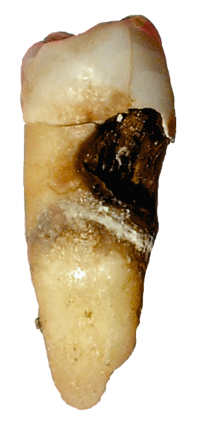[amazon_link asins=’B00AOCFPRC,B00AOCFPNQ,B01MV0C18R,B01CO5YWXY,B00AOCFPRM,B00AOCFPN6,161661532X,B00P1ATLUO,B01MPXWOTB’ template=’ProductCarousel’ store=’finmeacur-20′ marketplace=’US’ link_id=’7299838c-0763-11e8-bd67-271289224e89′]
Can genes, which are present in nature, be patented? A US court recently ruled that they cannot. The outcome may be cheaper diagnostic kits, says Hari Pulakkat
CLICK & SEE
It’s a debate that will continue for a few years, and the dust is unlikely to settle down even after that. Are human genes patentable? While the world slowly seemed to move towards a grudging acceptance of human gene patents, an American judge suddenly springs a surprise, ruling they aren’t valid, providing new hope for those campaigning against them. If the higher courts uphold this judgment, patients around the world could expect cheaper diagnostic tests soon.
To summarise, the American Civil Liberties Union and the Public Patent Foundation, two non-profit organisations, filed a lawsuit against Myriad Genetics, a biotech company based in Salt Lake City, Utah. Myriad, along with the University of Utah Research Foundation, is the holder of several patents on two breast cancer genes, BRCA1 and BRCA2. Myriad has developed tests for breast cancer susceptibility, and no one else can do those tests. Now Judge Robert Sweet of the New York District Court has ruled that some claims of the patents are invalid, thus opening the door for competitors.
The US and Europe have been allowing human gene patents for over two decades, and this is the first time a judge has questioned their validity. In the last two decades, the US Patent Office granted patents to over 4,300 genes, which is about 20 per cent of active human genes.
Diagnostic tests based on these patented genes are expensive, and not within the reach of many. In the US, for example, testing for breast cancer susceptibility can cost as much as $3,000 for a full analysis of both genes. “Many patients will benefit from this judgment,” says Mark Stoler, president of the American Society for Clinical Pathology. The judge himself noted that the tests cost less than $1,000 in Canada, where the genes are not patented.
On the other hand, several biotech companies have built business models around those, and raise money based on their gene patents. “Some biotech companies will now find it more difficult to raise money,” says Lisa Haile, partner of life sciences practice at DLA Piper, a large law firm. In fact, as a way of buttressing this fact, the shares of Myriad fell 9.2 per cent immediately after the judgment. Myriad’s revenues had increased almost 50 per cent last year, mostly owing to BRCA gene testing.
So a fierce battle is on between two factions. On one side are the life sciences industry, venture capitalalists and other investors in life sciences companies. On the other side are a large number of doctors, scientists, patients and non-profit organisations. Each has its arguments and supporting evidence. Although the second faction is unlikely to win in a superior court, its victory will have far-reaching impact on the life sciences industry and the future of medicine. “This is very likely to go to the Supreme Court,” says Haile. That would take at least two to four years, and what happens in the US is also a good pointer to what will happen later in other countries.
Opponents of gene patents have more than one argument against them. One of the first is, of course, the principle itself: genes are present in nature and thus cannot be patented. Myriad and others have argued what is patented is a unique DNA sequence isolated in a lab. Judge Sweet in his judgment says genes are genes, whether inside or outside the body. However, there are even stronger arguments against gene patenting. They push up medical costs, stifle innovation and prevent patients from taking a second opinion. It is not just the patients who have to pay Myriad; even scientists who work on the BRCA gene have to pay the company.
“Myriad is just one example,” says Stoler. “Around 5,000 new tests are likely to be developed in the next 10 years.” These tests will be based on genes, and indiscriminate patenting can make them unaffordable except to a small fraction of the world population. Some of these products will be built by a research foundation funded by the public, and hence won’t be the exclusive property of private companies. For example, the BRCA gene was discovered in the University of California Berkeley by Marie-Claire King, now at the University of Washington. King herself is known to be averse to gene patents.
On the other hand, the life sciences industry argues gene patents are no different from drug patents, and a 20-year exclusivity is a small price to pay for treatments and diagnostics that would not exist otherwise.
Even an unfavourable ruling by the Supreme Court is unlikely to stop innovation or patents, as the industry is trying to tell the world. Many diagnostic tests are on multiple genes, and products based on unique combinations of genes may be patentable, even if single genes themselves are not. In any case, the next four years will see some interesting battles.
Source: The Telegraph (Kolkata,India)
Related articles by Zemanta
- Taking Stock After Gene Patents Are Invalidated (nytimes.com)
- Blog – Gene Patents Ruled Invalid (technologyreview.com)
- Biotech companies try to assess impact of gene patent ruling (bendbulletin.com)
- Great story on legal battle over gene patents (boingboing.net)
- Myriad Loses Ruling Over Breast Cancer-Gene Patents (Update1) (businessweek.com)
- U.S. judge strikes down patent on cancer genes (ctv.ca)
- Judge: Cancer genes cannot be patented (bendbulletin.com)
- Judge Invalidates Human Gene Patent (nytimes.com)


![Reblog this post [with Zemanta]](https://i0.wp.com/img.zemanta.com/reblog_e.png?w=580)


































